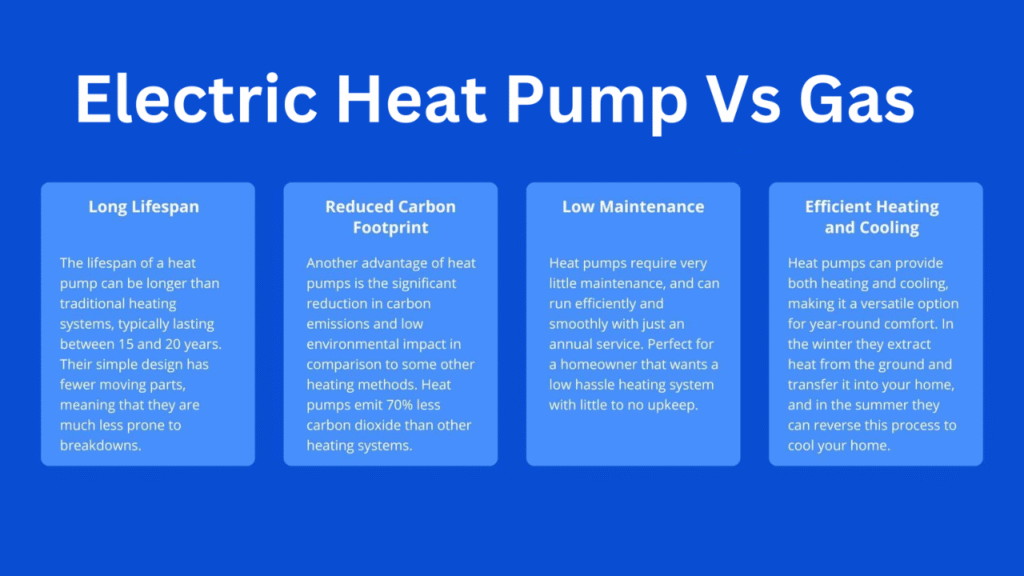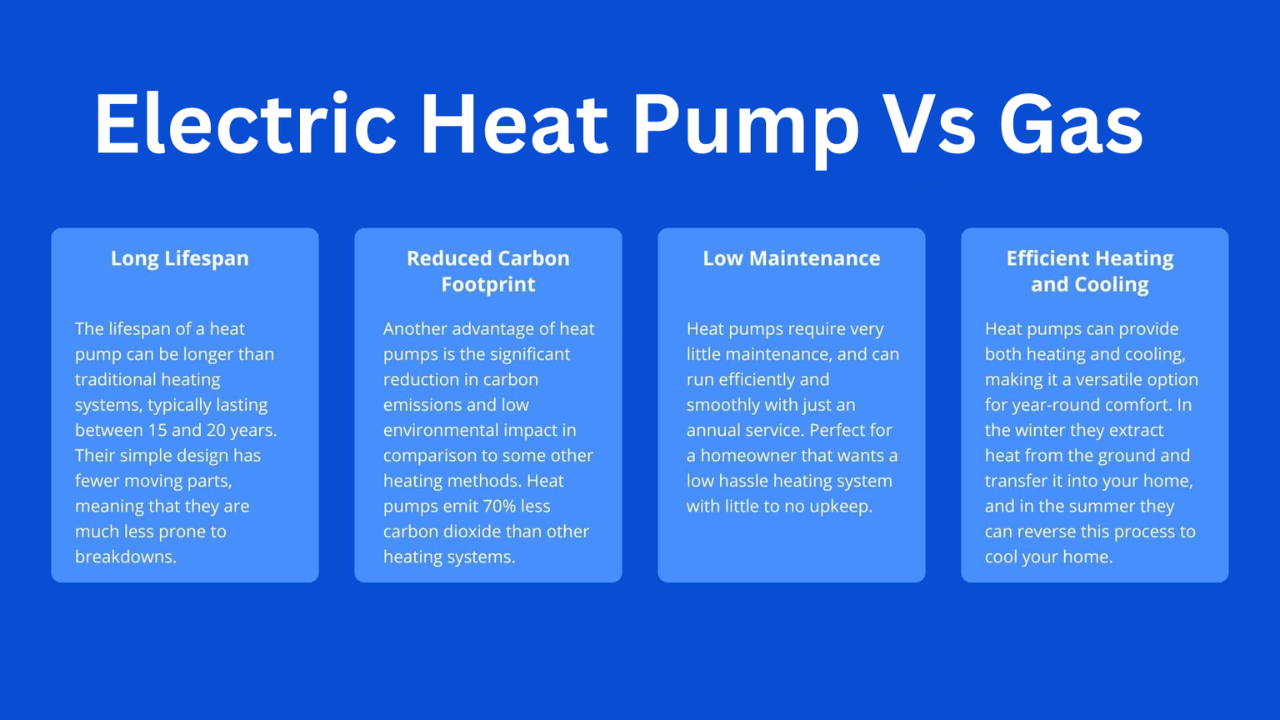
As the push for sustainability grows, homeowners and businesses are rethinking their heating choices. Two of the most common options—gas heating and electric heating—differ significantly in cost, efficiency, and environmental impact. The carbon footprint of each depends on various factors, including the source of the energy, the efficiency of the system, and the climate in which it operates. This guide breaks down how gas and electric heating compare in terms of emissions, performance, and long-term sustainability.
Understanding Carbon Footprint in Heating Systems
A carbon footprint measures the total greenhouse gas emissions (primarily CO₂) generated by a product, service, or activity. For heating systems, this includes emissions from:
- Energy production (natural gas extraction, coal burning, renewable generation).
- Transportation and distribution of energy.
- Operation of the heating system over its lifetime.
How Gas Heating Works and Its Carbon Impact
Gas heating systems typically burn natural gas, propane, or oil to generate heat.
- Direct Emissions: Burning natural gas releases CO₂, methane, and nitrogen oxides directly into the atmosphere.
- Carbon Intensity: On average, natural gas produces about 0.18–0.20 kg of CO₂ per kWh of heat output.
- Efficiency Factor: Modern condensing gas boilers can achieve 90–98% efficiency, but even the most efficient models emit greenhouse gases.
Pros of Gas Heating:
- High heating output, ideal for cold climates.
- Often cheaper to run in areas with low natural gas prices.
Cons:
- Direct carbon emissions from combustion.
- Reliance on fossil fuels.
- Methane leaks during extraction and transport increase environmental harm.
How Electric Heating Works and Its Carbon Impact
Electric heating systems—such as baseboard heaters, heat pumps, and electric furnaces—convert electricity into heat.
- Indirect Emissions: The carbon footprint depends on how the electricity is generated.
- Renewable-based grids (solar, wind, hydro) produce almost zero emissions.
- Fossil fuel-heavy grids (coal, oil, gas) produce significant emissions.
- Carbon Intensity: Average U.S. electricity generation emits 0.4–0.6 kg CO₂ per kWh—but this number is dropping as renewables increase.
- Efficiency Factor: Heat pumps can deliver 3–4 units of heat per unit of electricity, making them far more efficient than resistance heaters.
Pros of Electric Heating:
- No on-site emissions.
- Potentially carbon-neutral when paired with renewable energy.
- Low maintenance and long lifespan.
Cons:
- Higher operating costs in regions with expensive electricity.
- Dependent on grid carbon intensity.
Carbon Footprint Comparison Table
| Heating Type | Carbon Intensity (kg CO₂/kWh) | Efficiency (%) or COP | On-Site Emissions | Main Environmental Concern |
|---|---|---|---|---|
| Gas Furnace | 0.18–0.20 | 90–98 | Yes | Direct CO₂ & methane emissions |
| Electric Baseboard | 0.4–0.6 (grid-dependent) | 100 | No | Indirect emissions from power gen |
| Heat Pump (Electric) | 0.1–0.2 (with clean grid) | 300–400% COP | No | Dependent on clean electricity |
Factors That Influence Carbon Footprint Choice
1. Energy Source Mix
- If your electricity comes from renewables, electric heating is far greener.
- If your grid is coal-heavy, gas heating may have a smaller footprint in the short term.
2. Climate Conditions
- Gas systems excel in extremely cold climates.
- Heat pumps are highly efficient in mild to moderate climates.
3. Building Efficiency
- Well-insulated homes reduce overall energy demand, lowering emissions for both systems.
4. Future Grid Decarbonization
- As grids add more renewables, electric heating’s footprint will keep shrinking.
Cost vs. Carbon Considerations
Sometimes, the greener choice may not be the cheapest option upfront. Gas systems often cost less to install but more to operate in the long run if fuel prices rise. Electric systems—especially heat pumps—can be more expensive initially but benefit from lower emissions and potentially lower lifetime energy costs when paired with renewables.
Overview Table
| Feature | Gas Heating | Electric Heating |
|---|---|---|
| Direct Emissions | Yes (CO₂, methane) | No |
| Carbon Intensity | ~0.18–0.20 kg CO₂/kWh | 0.1–0.6 kg CO₂/kWh (grid-dependent) |
| Efficiency | 90–98% | 100% (resistance), 300–400% (heat pump) |
| Renewable Potential | None | High with clean electricity |
| Best Climate Use | Cold climates | Mild to moderate climates |
| Long-Term Trend | Limited improvement | Lower emissions as grid cleans up |
Conclusion
When it comes to carbon footprint, the winner depends heavily on your electricity source. If your grid uses mostly renewable energy, electric heating—especially heat pumps—beats gas hands down. However, in fossil-fuel-heavy grids, gas may currently have a smaller footprint, though this is changing rapidly as renewable adoption accelerates. For homeowners planning for the future, electric heating offers the most potential for a low-carbon, sustainable, and cost-effective solution.
3 Quick FAQs
- Is electric heating always better for the environment?
Not always—it depends on how clean your local electricity grid is. - Will gas heating get greener in the future?
Only slightly, unless paired with renewable biogas or carbon capture technology. - What’s the most eco-friendly heating option right now?
A heat pump powered by renewable electricity is currently the lowest-carbon choice.

